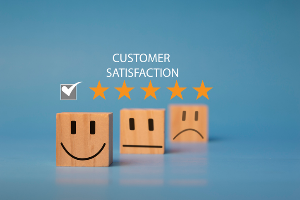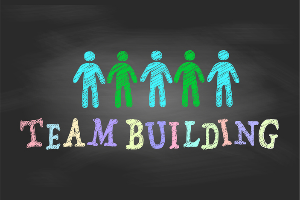
As a leader of a nonprofit organization, it is imperative to ensure that your clients are getting the customer service they desire. Even with a well-trained and dependable staff, unforeseen circumstances can arise, leading to your staff having to effectively de-escalate situations with irate or upset clients. By training your employees in these de-escalation techniques, you can create a more relaxed atmosphere and facilitate productive communication, ultimately leading to better outcomes for both parties involved.
Here are some useful tips that employees of nonprofits can use to de-escalate situations with upset clients:
1. Listen attentively and remain calm: The first step to diffusing a situation is to listen intently to the concerned party and remain calm. Avoid getting defensive or argumentative, as this will only worsen the situation.
2. Show empathy and understanding: It’s vital to acknowledge the client’s grievances and show that you understand their frustrations. Use statements such as “I appreciate your concerns” or “I can understand how you feel” to let them know that you’re listening.
3. Clarify the problem: Once you’ve listened to the client’s perspective, clarify the issue to ensure you understand the situation clearly. To do this, repeat what the client has said in your own words or ask a question to clarify any doubts.
4. Offer a solution: Once you understand the problem, offer potential solutions that could help resolve the issue. Ensure the solution is realistic, actionable, and in the best interest of the client.
5. Apologize if necessary: If a mistake has been made, sincerely apologize sincerely and take responsibility for the error. Use the apology as an opportunity to rebuild trust with the client.
Nonprofit leaders play a crucial role in managing challenging situations with upset clients. Successfully navigating these scenarios and building trust in your organization can be achieved through the implementation of effective de-escalation techniques. It is important to actively listen to their concerns, demonstrate empathy, clarify any issues, propose practical solutions, and take responsibility if necessary. By following these straightforward steps, your nonprofit can consistently deliver exceptional service, defuse tense situations, and positively impact your organization’s ratings. Demonstrating exceptional customer service with consistent earning 5-star ratings can help to enhance your reputation and further the mission of your nonprofit organization.
Furthermore, investing in the development of your staff through effective training programs is essential. By ensuring that your team has the necessary knowledge and tools to handle demanding customer interactions, you can foster improved client relationships and create a happier and more efficient workforce.
UST HR Workplace is here to make it easier for nonprofits to get the support they need. Sign up now for a free 60-day trial and enjoy access to our live HR certified consultants, 300+ on-demand training courses and an extensive compliance library with UST membership. Enjoy the beneficial insights and various resources that help empower you with the right tools and training to take better care of your team while keeping your clients contented. Act fast – join now and watch your nonprofit thrive!

Question: How should employee files be organized?
Answer: We recommend having five separate files for each employee, as outlined below:
These files should be kept in a secure location that is only accessible to those in the HR function or with a legitimate need to review the information—for instance, in locked cabinets inside a locked HR office. This information can be stored electronically if that makes more sense for your business. Just ensure that it’s well secured and backed up to prevent data loss.
There are specific requirements for storing I-9s electronically, which are probably good standards for any kind of electronic data storage.
This Q&A was provided by Mineral, powering the UST HR Workplace. Have HR questions? Sign your nonprofit up for a FREE 60-day trial here. As a UST member, simply log into your Mineral portal to access live HR certified consultants, 300+ on-demand training courses, an extensive compliance library, and more.

A well-designed onboarding plan is more than a perfunctory welcome packet with endless bureaucratic documents and a brief meet and greet from days gone by. It provides your nonprofit hiring team and the respective department manager an opportunity to fully integrate new hires into your organization.
Why Does Employee Onboarding for Nonprofits Matter?
An onboarding plan for new hires gives you a window — designated by your leadership and HR teams — to provide an in-depth cultural and productivity-based primer. It serves as a prolonged orientation that focuses on ensuring new employees have all the tools, they need to successfully complete daily tasks.
It’s equally important that new team members feel welcome and included by their peers and managers. Onboarding plans can help with this since they are generally designed with equity, diversity, and fairness in mind.
This focus aids in fostering a much-needed and desirable team-oriented environment. It helps individuals learn, acclimate, engage, improve, and thrive. A robust onboarding strategy helps ensure that everyone works together to fulfill your organization’s mission according to its values.
The Definition of an Employee Onboarding Process for Nonprofit Organizations
With helpful resources from trusted sources and partners, along with the following tips, you can create a highly effective onboarding program and get the results you want for your nonprofit organization and your valued employees.
Duration — Think Long Term
Onboarding is best when viewed as a long-range strategy. It isn’t a one-off event that takes one day. Instead, think of it as a continuous process that focuses on the employee’s long-term integration within the organization.
Think of timelines such as our 30-60-90-day plan that sets nonprofit employees up for short-term and long-term success that leads to powerful employee retention.
Mapping out a plan for a new hire’s crucial first three months can be instrumental. It provides structure, sets expectations, and ensures that both the organization and employee are aligned in their objectives and expectations.
Create a Nonprofit Employee Onboarding Checklist
Planning and organizing a long-range onboarding process will help ensure you don’t miss anything you want to include. This is true for any business, but for nonprofits, where mission and purpose are at the forefront, it’s vital to create an experience that aligns new employees with the organization’s unique vision and goals from day one.
Here is a sample checklist to ensure that your nonprofit’s onboarding process is comprehensive and effective:
Adaptability and future growth should be at the core, ensuring that the process remains relevant and effective as organizational needs evolve.
Rely on Technology to Streamline the Process
Besides sending out emails and productivity app messages before employees arrive the first day, you can lean on even more technological tools. For example, you can record complex training modules for processes you understand are challenging. This allows new hires to watch your in-depth video as many times as needed to understand a particular job task or operation.
Create an Employee Handbook
A thoughtful and comprehensive handbook communicates rules and policies. It also instills a sense of the organization’s culture, mission, and values. Best of all, it serves as an easily accessible, consistent, and constant companion which is essential for helping new hires navigate their initial days with greater confidence.
Designate a Work Partner or Buddy
Assigning a new hire to an existing employee to act as their work buddy helps to quickly instill and foster a sense of belonging. It’s no secret that starting a new job can be overwhelming in terms of the work itself and relationship-building. This step is your personal touch offering employees a go-to person for information, someone to answer their questions while acclimate to and align them with your mission, and their place in your organization.
Make Personal Introductions for Quick Connections and Long-Term Collaboration
Help new hires get to know as many of their colleagues as possible in the onboarding process. When you take the intentional time and energy to introduce new hires to team members and leadership, it helps to establish immediate connections, encouraging an open and collaborative work environment.
Set Clear Goals
Clear goals provide direction and purpose for your new hires to aspire to. Ensure that goals are aligned with the organizational objectives and tailored to the employee’s role, promoting a sense of accomplishment and belonging.
Establish a Mutual Feedback Loop
Regular constructive feedback reinforces positive behavior and identifies areas for improvement. It’s also a good time to discuss what the employee is doing right and how much you appreciate their efforts. However, feedback should be a two-way conversation, ensuring new hires feel heard and valued. Let them know that their constructive feedback is welcome and helpful to your managers and the organization.
Are You Ready to Launch Your Nonprofit Employee Onboarding Program?
If you are ready to develop, launch, or improve your nonprofit employee onboarding plan, UST stands as a beacon for nonprofit organizations. We offer solutions that simplify your operations so you and your team can focus on your mission.
Contact us here to learn more about our nonprofit onboarding strategies and support.
SOURCES

The Importance of Mental Health in the Nonprofit Workplace
Mental health is an often overlooked but critically important aspect of workplace wellbeing. Nonprofit organizations are especially susceptible because they are tackling some of the world’s most pressing issues. Organizations prioritizing employee mental health can anticipate improved employee engagement, greater satisfaction, and stronger outcomes. A psychologically safe workplace lays the foundation for such achievements. Statistics reveal that one in six individuals experience mental health issues at work, resulting in the loss of twelve billion workdays annually due to depression and anxiety. Additionally, happy employees are shown to be 13% more productive, according to an article by Spill.
The first step to creating a psychologically safe workplace is to understand what it is, and what it is not. A psychologically safe workplace is one where employees feel comfortable, respected, and valued. It is a place where they can express themselves without fear of ridicule, judgment, or discrimination. It is also a workplace where employees can voice their concerns without being punished, and where constructive criticism is encouraged. A psychologically safe workplace is not a place where employees fear retribution for speaking out, where bullying is tolerated, or where mental health concerns are stigmatized.
Creating a Psychologically Safe Environment
To create a psychologically safe workplace, within a nonprofit organization, leaders and managers must prioritize their employees’ mental health and wellbeing. Employees of nonprofit organization often work long hours, and care deeply about the impact they are making. This emotional toll on employees can lead to burnout. By means providing access to mental health resources, including counseling and therapy services, promoting work-life balance, and encouraging self-care, you can help mitigate employee stress. It also means creating clear and fair policies regarding performance evaluation, promotion, and disciplinary action. This way, employees can feel assured that they are being evaluated based on their performance and skills, rather than personal biases or factors outside their control.
Training and education are also crucial to creating a psychologically safe workplace. Leaders and managers should educate themselves on mental health wellness strategies and best practices for supporting employees in this area. They should also provide training to their staff on recognizing and responding to mental health concerns, as well as promoting mental health awareness and reducing stigma. If you want to continue your educational journey, UST’s HR and Compliance partner, Mineral, has a variety of educational resources to help get you started. Read Mineral’s blog, How Employers Can Address Mental Health in the Workplace, by clicking here.
Getting a psychologically safe nonprofit workplace requires continuous dedication, effort, and resources. However, the advantages of a safe and positive work environment for both employees and organizations are worthwhile. By prioritizing mental health and wellbeing, implementing clear policies, and offering resources, nonprofit leaders and managers can establish a supportive, respectful, and inclusive workplace culture for all employees.
Find more resources to navigate your nonprofit’s workplace with UST’s blogs.
Source: https://www.spill.chat/mental-health-statistics/workplace-mental-health-statistics

Question: We have two employees who don’t seem to like each other, and it is starting to affect their work. How do we help employees who don’t get along to work well together?
Answer: Getting employees who don’t like each other to work well together can be challenging, but here are several steps you can take to improve the situation:
This Q&A was provided by Mineral, powering the UST HR Workplace. Have HR questions? Sign your nonprofit up for a FREE 60-day trial here. As a UST member, simply log into your Mineral portal to access live HR certified consultants, 300+ on-demand training courses, an extensive compliance library, and more.

An engaging communication strategy is vital for any business, regardless of the size of the organization or whether it is in the private or nonprofit sector. Good communications enable you to share and clarify your organization’s message, boost visibility and awareness, and generate engagement and support. This key element is involved in every charitable campaign, project, or event, so you need to develop a nonprofit communication strategy your organization can count on.
In this blog post, we’ll share some insights about communication strategies for nonprofits and how you can develop one that gets results for your mission.
What is a Nonprofit Communication Strategy?
A communication strategy for nonprofit organizations is an intentional, custom framework that allows for seamless communication with donors, media, beneficiaries, volunteers, stakeholders, and the public. It’s more than a messaging system or a way to distribute the latest information; a strong communications strategy serves as a roadmap for creating, delivering and managing consistent and meaningful messages with impact—supporting the organization’s goals and mission.
Why is an Efficient Nonprofit Communication Strategy an Important Organizational Task?
We touched on some reasons that a communication plan is vital for nonprofits, such as communicating a clear and consistent message, boosting visibility and awareness, and facilitating engagement.
Here are some additional reasons to help you understand why a communication strategy is essential.
5 Steps to Create an Effective Nonprofit Communications Strategy
A high-performing nonprofit communication plan answers the core questions: What? When? Who? Where? How?
We’ve come up with five steps to create an effective nonprofit communication strategy to gain all the benefits needed to run a successful nonprofit company or fundraising event, using the basic questions to guide your nonprofit toward success.
1. Set Goals and Objectives (What?)
Essentially, what do you want your communication strategy to do? There are many different types of goals you might choose. A perennial favorite set of goals are Specific, Measurable, Achievable, Resourced and Time-Bound (SMART), which help point you toward the broad outcomes you want to achieve through your communications — but any set of goals that helps you do that will work.
Consider establishing goals such as seeking fundraising from corporate donors, building branding and awareness, and engaging your local community.
Your objectives should always reflect the ways in which you and your team are working on the goals you want to reach for optimal transparency and trust-building.
2. Establish a Timeline and Frequency (When?)
It’s important to determine the overarching timeline for sending out communications from your nonprofit. It’s just as important to determine how much communication your audience wants — you don’t want to flood someone’s inbox, turning him or her off from your messaging completely.
Further, the frequency is different for diverse types of communication. For example, you might publish one or two blog posts per week, several social media post each week and send out one email daily. If you have a fast-approaching event, you might increase the communication frequency for your most effective channels.
3. Know Your Audience (Who?)
Knowing your audience, speaking to them directly, and providing them meaningful information are essential ways to drive engagement with the right donors and stakeholders. For instance, do you want to gain new donors or update long-term existing donors? If you want to send regular emails or newsletters, either separate the different donors manually or find the right donor data segmentation support to make it easier.
4. Clarify Your Message and Create Content with Integrity and Transparency (Where?)
Clarify your brand and message, ensuring it is simple, consistent, and easily understood. Focus on the high-level point you want to make each time, such as your mission, why you need financial support and the donor’s impact. By sharing these things, you are providing effective storytelling, which frequently resonates with donors. You will build trust, transparency and honesty in your messaging that inspires people to support your organization and keep coming back.
Share your messages through the channels listed above and others, including blog posts, social media posts, print media, television advertising, and radio commercials when applicable.
5. Evaluate Your Strategy (How?)
It’s important to regularly check to see how your nonprofit’s communications strategy is doing. At a minimum, take the time and effort to evaluate your strategy and planning process on a monthly basis. Review your past work to see how effective it was, using key performance indicators (KPIs) and choosing the best metrics to determine whether you are on track to meet your communication goals.
Here are some KPIs to consider in your evaluation process:
Summing Up
An effective communications strategy will allow your nonprofit organization to reach your audience and create meaningful engagement that satisfies donors, stakeholders, and beneficiaries. Our UST HR Workplace can help you develop, launch and maintain a powerful communications strategy wherein you foster connection through targeted outreach and helpful, timely information and prompts for action.
Contact us to learn more about how we can help you serve your population.
Sources
https://www.networkforgood.com/resource/top-10-reasons-for-creating-a-communications-plan/
https://afpglobal.org/introduction-donor-data-segmentation?gclid=Cj0KCQjwi7GnBhDXARIsAFLvH4lx3Yi9Sgx1Gsu3xA3LhGM3k_Kh1vPC6ERjW8xZcLk6qHugFYiz4lEaAogtEALw_wcB

Running a nonprofit organization requires a tremendous amount of teamwork and collaboration. In today’s digital age, many nonprofits have adapted to remote work models to be more efficient, cost-effective, and flexible. However, when it comes to remote collaboration, challenges such as communication barriers, cultural differences, and time zone disparities can make it difficult to maintain effective collaboration across your workforce.
In this blog, we’ll share effective strategies that can help you enhance remote collaboration throughout your nonprofit organization.
Invest in the Right Collaboration Tools
Your organization needs the right tools to help improve collaboration among remote teams. Some essential tools that can help include cloud-based document sharing platforms like Google Docs and Dropbox, video-conferencing apps like Zoom and Skype, chat and messaging apps like Slack, and project management tools like Trello and Asana.
Establish Clear Guidelines for Effective Communication
Communication is the lifeblood of collaboration. To ensure effective collaboration, it’s important to establish clear communication guidelines and protocols that apply to all members of your organization. These guidelines should include standards for language, tone, response times, and how to handle disagreements.
Foster a Culture of Open Communication
Remote collaboration requires a more inclusive and transparent communication approach. Encourage your team members to be more open and transparent in their communication while ensuring that they are effectively listened to and their opinions noted. This will ensure that every member of your team has an equal chance to share their ideas, which will ultimately lead to more effective collaboration.
Develop Work-Collaboration Schedules
As remote teams can be scattered around the world, it’s essential to have defined collaboration schedules to ensure that all members of the team can contribute. Work-collaboration schedules can cover topics such as project meetings, deadlines, shared work times, etc.
Train your Team in Virtual Collaboration Skills
Provide training and workshops to your team, informing them on best practices in virtual collaboration skills relevant to your workforce. Proper training and education in virtual communication, project management, and teamwork will create well-rounded staff who are more effective in a virtual work environment.
It’s essential to embrace and encourage a healthy culture of remote collaboration. By providing your team with the resources for safe and productive collaboration, you’re helping foster an environment of creativity, connectedness, and efficiency. With the right tools in place, you won’t have to compromise on quality or efficiency as people work from wherever they are most comfortable and productive. A strong foundation made up of communication, trust, transparency, and open-mindedness can help take your nonprofit to another level. Your employees will feel empowered knowing that their work matters and that they are part of an organization with core values that enable greater collaboration across your remote workforce. Don’t hesitate to invest in the tools necessary to support remote collaboration – it could be the keystone for your nonprofit’s success.
Find more resources to help your nonprofit navigate the digital age with UST’s blogs.

Question: What are effective ways to manage remote employees and monitor their work?
Answer: Managing remote employees can certainly be a challenge. Here are some of the practices we recommend:
This Q&A was provided by Mineral, powering the UST HR Workplace. Have HR questions? Sign your nonprofit up for a FREE 60-day trial here. As a UST member, simply log into your Mineral portal to access live HR certified consultants, 300+ on-demand training courses, an extensive compliance library, and more.

Strong management is essential for any organization, and that certainly includes nonprofit organizations. Nonprofit management skills are the foundation of success for leaders who carry the responsibility of supporting and advancing the organization’s mission. Professionals in nonprofit management roles are also responsible for managing teams to accomplish goals while administering resources and ensuring accountability to stakeholders.
In this blog post, we will look more closely at the importance of strong not-for-profit management skills and how you can ensure your team keeps your nonprofit business running smoothly.
What Is Nonprofit Management?
The primary goal of a nonprofit organization is often to raise funds for a cause or provide service to a group or community. There are many moving parts to such an operation—making nonprofit management skills essential—since the role’s primary function is the oversight of processes, strategies, and events that drive an organization toward its short- and long-term objectives.
Professionals working as part of a nonprofit management team face several tasks to ensure that the organization is operating effectively and efficiently. These tasks include managing personnel, overseeing the financial budget, and ensuring regulatory compliance for any fundraising events, tactics, and strategies on the horizon.
Why Are Management and Leadership Skills in Nonprofit Organizations Important for Your Organization?
A prominent aspect of nonprofit management involves finding and developing the ideal qualities needed for nonprofit managers who understand what it takes to lead your nonprofit organization. Your management team should have the skills and passion to motivate volunteers and staff to work together to achieve unified short- and long-term goals.
Since many nonprofits use a rotating group of individuals to volunteer or serve as employees, it is especially important for nonprofit management to remain adaptable—understanding how to inspire individuals with outside jobs and other responsibilities.
One of the top leadership skills in nonprofit organizations is the ability to establish order and organization while maintaining authority and providing upbeat motivation—it is a unique and vital position in the nonprofit space.
Essential Management Skills for Nonprofit Leaders
Now that you know how important good management is, we’ll explore what essential skills to look for when choosing candidates for your executive team.
Financial Management
Proper financial management is a critically important part of running a successful not-for-profit organization. Ensuring your financials are in order ensures that your nonprofit can sustain operations, fulfill its mission, and remain accountable to all stakeholders, including those at the government level.
Some tasks involved with financial management include the following:
Strategic Planning
Strategic planning is one of the top nonprofit management skills, as it steers the organization’s direction. It also helps establish priorities and ensures alignment with the organization’s mission and goals.
Here are some tasks associated with strategic planning for nonprofits:
Relationship Building and Communication Skills
Since nonprofit organizations typically attract individuals who enjoy seeking a higher purpose, relationship building, and strong communication skills are fundamental in not-for-profit management. Your management team must establish and nurture relationships with stakeholders, who consist of volunteers, donors, beneficiaries, partners, and the community. All these individuals and groups contribute to the success of your organization and its mission.
Here are a few criteria associated with effective relationship building and communication:
Additional skills useful in relationship building and communication include donor stewardship, ethical engagement and continuous engagement.
Decision-Making
Quick and effective decision-making skills are vital for nonprofit management leadership. Such skills allow them to tend to the organization’s resources, resource allocation, strategies and overall success.
Here are some elements for successful decision-making for your not-for-profit managers:
Promoting Professional Growth for Employees
Just as you find individuals who want professional growth in for-profit businesses, you also find them in the nonprofit sector. Ensure your management team recognizes this need for employees to grow and thrive as they help you meet your organization’s goals.
Here are some things you can do:
The success of any nonprofit organization begins with strong management, and it takes a skilled team to optimize resources and manage investments. Leveraging the right strategies and skill sets helps nonprofits create a network of committed supporters and creates an impact in the local community. With UST HR Workplace, you can find solutions to help give your management team the tools they need to drive your nonprofit forward. We understand the unique challenges of nonprofit organizations and have created our system in response to those needs. Visit UST HR Workplace today and let us show you how we can help you succeed!
Sources
https://nla1.org/nonprofit-management-skills/

Running productive meetings is a crucial aspect of ensuring a nonprofit organization’s success—especially when the team is working remotely. Virtual meetings have become the norm due to the rise of remote workforces. However, holding meetings remotely also presents unique challenges that can affect their efficiency. In this blog, we will discuss essential tips that nonprofit leaders can leverage to run productive meetings with a remote workforce.
1. Define the meeting’s goals and agenda: Before hosting a virtual meeting, you need to have specific objectives that you want to achieve during the session. Defining the goal and agenda of the meeting beforehand ensures that everyone is on the same page and can prepare accordingly. Having a clear agenda can help keep the meeting focused, minimize distractions, and improve engagement.
2. Choose the right communication tools: Selecting the right communication tools can significantly improve the productivity of your virtual meetings. Consider using a reliable video conferencing platform that allows everyone to participate and share their ideas. Additionally, choose a platform that enhances collaborative features such as instant messaging, screen sharing, virtual breakout rooms, recording capabilities, and many more.
3. Set clear expectations for participants: Ensure that all meeting participants are aware of their roles, expectations, and responsibilities during the session. This includes specifying what participants should prepare beforehand and where they should share any follow-up information or feedback. Clear expectations foster a sense of accountability and enable you to achieve the set meeting objectives.
4. Foster an inclusive environment: Inclusivity is essential, particularly when working with a remote workforce. Ensure that everyone has an opportunity to participate and contribute during the meeting. Encourage open and respectful communication among staff members by creating a relaxed and conducive environment. Additionally, respect your team’s time by starting and ending the meeting promptly.
5. Follow up after the meeting: After the meeting, be sure to provide a summary of the discussion, conclusions, and any necessary action items. Share the information with all concerned parties and ensure that everyone understands next steps, and clear action plans are in place. Following up after the meeting is essential to ensure that the meeting’s objectives are achieved and that progress towards achieving the set goals is monitored.
Following the tips above can help remote teams stay connected, engaged, and productive during virtual meetings. By using the right communication tools, setting clear expectations, fostering inclusivity, and following up after the meeting, you can effectively run productive meetings with remote teams. As a nonprofit organization, you must use every tool and resource available to ensure the success of your meetings and ultimately achieve your mission.

Question: What are some typical examples of employee discipline? Are there any you recommend?
Answer: Discipline should reflect the severity of the behavior, attempt to correct it, and be applied consistently. You’ll want to consider how you addressed certain behaviors in the past and the precedent you want to set for the future. For instance, if you jump straight to a final warning when a certain employee is an hour late to work, but let another employee come in late regularly without so much as a written warning, you’re setting yourself up for trouble.
We generally recommend progressive discipline. This means you start small and work your way up to termination. Progressive discipline often includes these steps:
At each step, make your expectations clear, notify the employee of the consequences should they fail to improve (that they’ll be one step closer to termination), and document what actions you took. The warnings you give to the employee should stick to the facts, i.e., what infraction was observed, when it occurred, and what policy or policies was violated. Opinions about the infraction should be left out, as these are easily disputed. For example, “Yesterday, you arrived 20 minutes late in violation of our attendance policy” simply states the facts, whereas “You’re always tardy and can’t be trusted to arrive on time” is likely to get pushback.
This Q&A was provided by Mineral, powering the UST HR Workplace. Have HR questions? Sign your nonprofit up for a FREE 60-day trial here. As a UST member, simply log into your Mineral portal to access live HR certified consultants, 300+ on-demand training courses, an extensive compliance library, and more.

A strategic plan provides a clear process of determining, documenting, and establishing the direction of a nonprofit organization.
Strategic planning for nonprofit organizations like yours is crucial, allowing you to assess where your nonprofit is at now and where you want it to go. It allows your nonprofit decision-makers to see the big picture and make the desired impact on your community.
Let’s find out more about this important process and what it can do for your nonprofit.
What Is a Strategic Plan for Nonprofits?
A strategic plan for nonprofits is a full process that allows leadership to identify key elements on a well-defined map that helps organizations define their goals for their organization and their community. It asks your nonprofit leaders to create or define goals and objectives and empowers them to make the necessary decisions to achieve them.
The Top 5 Steps for Implementing a Strategic Plan
Like all nonprofit leadership, your goal is to serve your community. It is more challenging to do so without a solid, strategic plan to guide you and your devoted team. There are some steps you can take to develop and implement a strategic plan that helps everyone in your organization stay on track to successfully support your mission.
Let’s look at the following five steps that you can use to implement a strategic plan.
1. Complete a SWOT analysis and set goals
The first step in developing and implementing a strategic plan is setting clear goals and defining the variables that help you achieve them. A SWOT is a basic technique used by all types of businesses, including nonprofit organizations, to identify processes in an organization’s strengths, weaknesses, opportunities, risks and threats to your organization. Many nonprofits rely on it to help with personnel evaluations and marketing campaign planning, in addition to standard organization-wide strategic planning.
2. Set SMART objectives
SMART objectives can be powerful tools in helping support your mission, providing landmarks to help you achieve your larger goals.
Here is what SMART objectives are and what they allow you to do:
For example, SMART goals are essential in helping nonprofits manage fundraising events and seasons, letting everyone know where your nonprofit is in terms of financial goals.
3. Establish specific tactics to support each objective
The tactics you and your team use provide help to achieve the smaller, more specific tasks that your team members achieve your nonprofit’s overarching goals, focusing on the mission, budget and SMART initiatives.
4. Reevaluate information
Strategic planning isn’t necessarily static — factors will change over time. It’s important to adjust your goals and objectives as you move through the process.
5. Keep the plan dynamic to scale with your organization
As mentioned above, circumstances change. That makes it important to keep your plan dynamic and scalable. For example, you might achieve some goals sooner than others, allowing you to redirect to hit new benchmarks on an adjusted timeline.
6. UST is here to offer support along the way.
We offer a variety of resources and tools to help your nonprofit organization on it’s journey to building a strategic plan that supports your ever-growing and evolving leadership team.
If you’re looking for a cost effective workforce solution for your nonprofit, submit a FREE Cost Analysis and one of our consultants will be in touch with you.
SOURCES
https://www.investopedia.com/financial-edge/0612/the-importance-of-strategic-planning.aspx
https://nonprofithub.org/why-most-swot-analyses-stink-2/

With the rise of remote work, more and more companies are forced to rely on virtual teams to get things done. Teamwork is one of the most essential aspects of any organization but remote-first employers are experiencing a unique set of challenges when it comes to creating effective collaboration and team building. Many organizations are recognizing the importance of team building exercises, especially when managing a remote workforce.
Without regular face-to-face interaction, remote workers can feel isolated and disconnected from their colleagues—making team building a crucial aspect of driving long-term success within your organization. Here, we explore the benefits of team building for remote teams, along with some practical strategies to help keep your remote team connected and engaged.
In this blog post, we will explore the benefits of team building exercises for remote teams and how they help to improve team dynamics, communication, and productivity.
1. Build Trust and Camaraderie: Trust is essential for any team to work efficiently, and virtual team building activities are an excellent way to help build trust among team members. Engaging in activities that make teams feel connected and trusted are just one of the essential elements of a well-functioning remote team. You can start with simple icebreaker activities like virtual coffee breaks or a weekly happy hour where team members can bond and get to know each other. Remember, when team members build trust, they are more likely to collaborate effectively and communicate openly.
2. Effective Collaboration: Team building modules that involve collaboration tasks among remote workers lead to efficient and productive teamwork. Remote teams need to learn how to work together, share ideas, and give timely feedback, which is essential to overcome the challenges of working from different time zones. Activities like virtual brainstorming, problem-solving, and discussion forums help to get the juices flowing and sharpen collaboration skills.
3. Reduce Isolation: Remote employees can feel disconnected, leading to isolation, which is bad for overall morale. By providing an avenue for team engagement, remote team members are less likely to experience feelings of loneliness, stress or burnout. Virtual team-building activities like fitness challenges, healthy cooking competitions, or book clubs can help keep remote workers energized and connected to their teams.
4. Encouraging Creativity: Remote teams often face creative challenges due to the geographical and cultural differences among team members. Team building exercises that promote creativity can help address these challenges by providing a creative outlet for team members. Virtual brainstorming sessions, online group discussions, and creative projects can help inspire creativity and encourage out-of-the-box thinking among remote team members.
5. Improved Communication: One of the most common challenges remote teams face is communication breakdown. However, virtual team building exercises not only promote communication but also provide opportunities for team members to get to know each other personally. Virtual team building exercises such as Virtual Scavenger Hunts, Remote Happy Hours, and Online Game Tournaments are excellent ways to bring together remote workers and help them bond on a personal level.
6. Increased Productivity and Job Satisfaction: Remote employees who are engaged and motivated are more productive and satisfied at work. Virtual team building activities can help fix this problem by creating a sense of community and shared purpose among your remote staff and when team members feel connected and engaged, they are more likely to be motivated about their work.
7. Building a Stronger Team: Finally, the ultimate goal of team building exercises is to create a stronger, more cohesive team. By engaging in virtual team building activities, remote workers can develop a shared sense of responsibility and accountability towards the team’s success. When team members perceive themselves as part of a team, they are more likely to support each other, be more engaged in their work and contribute positively towards the team’s goals.
Just because team building with remote workers can be challenging doesn’t mean it should be neglected. In fact, it’s more important now than ever. By implementing virtual team building activities, you can boost communication, productivity, and overall job satisfaction. This, in turn, contributes to a well-connected and efficient remote team, leading to the success of your organization. Don’t let remote work hinder your team’s potential – prioritize team building for your remote teams.

Question: We’ve transitioned to a remote-first workforce. How can we keep our employees and managers engaged with video meetings and messaging apps—especially those employees that are missing the social aspects of working together physically?
Answer: Even with video conferencing and messaging apps, fully involving remote employees in team and company meetings remains a challenge. There may be no replacing the experience of being physically in the room, but you can take steps to make these meetings more productive and inclusive.
The most important thing to remember when “meeting” with remote employees is that you can’t conduct the meeting in the same way as you normally do when everyone is physically present. You have to find a way to replace the advantages that close proximity has, especially the ease of reading body language and picking up social cues. These, unfortunately, do not translate well over the screen or the phone. So, what can you do?
What remote employees need to fully participate in meetings is space and time to speak. You can provide this space and time in a few ways. First, if there are some physically present participants, ask them to pause for a second before jumping into the conversation. This gives remote employees time to get a word in, plus it helps counter any time delays caused by the conferencing technology. Second, whoever is leading the meeting should regularly invite remote employees to add anything if they have something to say, preferably before moving on in the agenda. Third, when possible, have a remote employee lead the meeting or a section on the agenda. This focuses attention on the remote speakers and can help remind everyone that the meeting isn’t just happening in the physical room. Finally, if a group of remote employees are located in the same workspace, occasionally setting their site as the physical meeting space can help your non-remote employees get a feel for the challenges of being remote during a meeting.
Some preliminary work before the meeting can also help make the meeting itself more efficient. First, test any systems ahead of time so that they’re working for everyone when the meeting starts. Second, email the agenda out so everyone knows what to expect. Third, assign someone in the meeting room to be the contact person that remote employees can email or message if they have questions, concerns, or issues.
After the meeting, check in with any remote employees and ask them to be candid about their experience. What worked well and what could be improved? See what you can do to accommodate them in the next meeting.
You may not be able to fully replicate the experience of physically being in the room, but taking these steps can enable remote employees to feel more involved and make the meeting itself run more smoothly.
This Q&A was provided by Mineral, powering the UST HR Workplace. Have HR questions? Sign your nonprofit up for a FREE 60-day trial here. As a UST member, simply log into your Mineral portal to access live HR certified consultants, 300+ on-demand training courses, an extensive compliance library, and more.

High employee turnover can be a major challenge for nonprofit organizations. When employees leave, it requires significant resources to train and orient new staff, leading to disruption in day-to-day operations. High turnover can also lead to an organizational culture of instability—reducing morale and weakening relationships with volunteers and donors.
Nonprofit organizations must take steps now to reduce turnover rates and retain their valued employees. Discover the latest trends in tackling high turnover rates and learn what you can do to ensure your workforce is engaged and driving your mission forward in this on-demand recording.
In this session, we’ll explore:
Upcoming UST Live Webinars: This webinar series was designed to equip nonprofits with the strategies and resources they need to survive (and thrive) in a constantly evolving environment. Be on the lookout for our September UST Live panel when we’ll discuss how having a diverse workforce—with individuals from different generations—can lead to a more productive and innovative work culture that will help nonprofit employers achieve their mission-driven goals.

In recent years, the general workforce has been through a lot. They’ve faced discrimination, income loss, job insecurity, benefits insecurity, as well as a host of other professional, financial and personal problems. So, while it’s true that they’re seeking the best income they can achieve for their skills and talents, there is a lot to be said for offering an exceptional employee experience. What that means will vary by organization, of course, but there are a few basics you could offer that might make the difference in attracting best-fit staff.
Design Nonprofit Work to Enrich Their Lives in Meaningful Ways
While seeking creative ways to entice and engage talent, take some cues from the employee experiences offered by other employers (many of whom are nonprofits or social enterprises). For example, amp up your one-on-one manager-employee meetings—it’s an all-enterprise opportunity. Make it employee-driven with topics including current projects all the way to achievements toward career goals. Here are some ideas to whet your appetite for potential employee experiences:
Hold the Ladder
Prior to the events of 2020, Millennials were expected to make up 75% of the workforce by 2025. While they’ll continue to dominate the workforce for the next few years, you should expect other generations to seek work as they attempt to recoup financial losses and prepare for the future. Millennials, as a demographic, have generally expressed an interest in opportunities to build skills as part of an employment package. According to Gallup, more than half of this demographic rated it as “extremely important” when applying for a job. With many industries recovering — or not — from chaotic fluctuations in the business world, this expectation has only expanded in the workforce. They feel vulnerable. You can assuage their fears.
Imagine being handed a career roadmap — a clear, documented path that shows how you can advance through the company. When you create a customized plan for each employee, you show that you’re willing and happy to invest in that person’s future. This nurturing effort is rare and will build rapport quickly, as workers see that you’re really living up to your promoted employer brand. They will share this with their friends, and word will spread that you’re doing something rare and impressive for your staff members.
Welcome Them to a Spectacular Workspace
From their first day at work, employees need to feel that they’ve found something special. How do you welcome new staff members? Is there a company-wide announcement, even by email? Robust onboarding for new employees will go a long way to ensuring a full commitment to your organization. Sometimes, especially in smaller nonprofits, the crush of work can overwhelm attempts at welcoming and training new-hires. Don’t ignore your responsibility to prepare workers adequately for their jobs. This includes temp-to-perm workers. A strong onboarding program will go a long way to ensuring retention, especially when you pair new-hires with veteran workers as personal and professional mentors.
While ping pong tables have come to seem superfluous to most employees, you still need to have an enjoyable, vibrant workplace. Think of it the way a real estate agent would “stage” a home that’s for sale. Is your workspace cluttered, filled with musty old boxes? Do your walls need a fresh coat of paint? How’s your decor? How does the building interior smell? Are the floors in good shape? Don’t dismiss esthetics. This is where people working in a physical office space will be spending a huge portion of their lives. It doesn’t have to be an amusement park, but it shouldn’t be depressing, either.
Build a Strengths-Based Organizational Culture
Now that you’ve hired a new worker, what are you doing to keep them at your nonprofit? Studies in recent years have shown that roughly half of all employees are actively looking for a new job or tracking openings online. If you’re not actively seeking to engage with your culture, it should be a priority.
According to Gallup, when employees use their personal and professional strengths, they are nearly six times more engaged, perform better at their jobs and are less likely to leave their current job. Consider using the Online Talent Assessment (formerly CliftonStrengths) to begin understanding your best-fit culture. This assessment, alone, can help you identify the hidden futurist in your office, the person most able to build team harmony, or the restorative worker who’s great at diagnosing and solving problems. There are 34 such strengths listed in this assessment, and every one of those skills could be useful to your nonprofit. 25
To really build a strengths-based culture, you’ll need to integrate strengths development throughout your nonprofit—your mission, vision, values and processes as well as your workflow and collaboration—everything should reflect a dedicated effort. So, augment that paycheck with a sense of purpose. Offer a robust menu of staff development. Use strengths assessments and have managers coach as they learn to understand and apply their newly identified strengths. Give ongoing conversational feedback rather than an annual review. Nothing is more impactful in cultivating a sense of belonging than valuing people for their skills and talents.
Be the Talk of the Town, in a Good Way
Remember that today’s workforce members are not shy about reporting publicly if they feel that a company maintains a negative or chaotic employee experience. Sites like Glassdoor provide a platform for such expression, and job seekers do review these reports when deciding on a job offer. Nearly a third of workers have declined a job offer based on negative online reviews. In a study of for-profits, those who invested in improving their employee experiences were nearly 12 times more likely to appear in Glassdoor’s Best Places to Work and more than twice as likely to be listed in Forbes’ World’s Most Innovative Companies. The same benefits could take place in your nonprofit. A positive employee experience helps staff feel empowered to do better—increasing buy-in and advocating for you as an employer. When workers are satisfied with their management, their future and their impact toward the mission of your organization, they will be more productive, consistently delivering superior performance and also recommending your organization to their acquaintances.
Encouraging Staff Innovation
Once strengths have been recognized, be sure to recognize and reward innovative thought. To improve on that, make sure your culture allows collaboration across departments for individuals who need to connect with others to draw on their expertise for the benefit of the organization, its culture, and the population it serves. Back up your support with useful technology to really make the ideas fly.
In these interesting times, today’s workforce yearns for the opportunity to contribute their creativity. With the support of HR professionals like you, they will devise solutions that bring us closer to realizing our ideals. Together — drawing from our collective strength — we can achieve the dawn of a new world society that honors Senator Kennedy’s noble dream.
This is an excerpt from UST’s eBook, “5 Ways to Shape a Durable Workplace of Inclusivity, Innovation and Trust” in collaboration with Beth Black, Writer and Editor.

In December 2022, Forbes discussed the state of workers and their feelings about remote and hybrid workplace models. Considering the demand and desire for such positions, it comes as little surprise that 87% of research respondents stated that their quality of life improved while working remotely.
Few sectors of the business landscape remain untouched by this massive change.
But what about the impact on the nonprofit workforce? Nonprofit virtual volunteering and paid workers’ feelings on this subject closely align with workers who want a hybrid or remote nonprofit model.
While the pandemic sparked a massive interest in remote, hybrid and other flexible work models, it was only a matter of time. With technology becoming increasingly more and more prevalent, workers were already prepared to follow the lead of fellow telecommuting workers, freelancers and contractors enjoying working from home or anywhere with an Internet connection.
3 Top Benefits of Hiring Remote Workers
Most nonprofit organizations launch to help a specific community or society on a larger scale. In either case, it is also important to care for the well-being of virtual nonprofit volunteers and as well as paid employees.
Today’s advances in technology and the nature of many job positions mean that it is easier than ever to perform daily work tasks from home. As long as employees have a reliable Internet connection and all the equipment and information they need, why not allow them to choose where they work from?
Let’s explore some benefits of nonprofits hiring remote employees to ease your mind about this increasingly embraced workplace model.
1. Happier and More Satisfied Employees
Employee satisfaction is important to your business, especially in a time of uncertainty for business owners and workers. Remote workplace models frequently lead to happier, less stressful workers.
The flexibility of remote work allows employees to skip long commutes, expensive fuel prices and time away from family—fostering a better work-life balance in a way that suits them and benefits productivity and profitability for your nonprofit.
2. Improved Employee Retention and Recruitment
Employees and job candidates want more options and freedom to serve employers better. They will seek out employers or stick with them if a flexible work model is available.
By remaining inflexible with your workplace model, you risk losing excellent employees. Simultaneously, top candidates will wait for the right opportunity to suit their needs and goals, bypassing your company if you refuse to consider remote or hybrid options. Keep in mind that 63% of millennial workers want to work for a company with a flexible work schedule. Best of all, remote workers are 50% less likely to resign.
Another benefit to your company is that you can cast a broader search net—considering candidates from all over the country who will relocate for the right company and conditions.
3. Increased Productivity from Your Workforce
In late 2022, Forbes reported that 29% of remote workers feel that they are more productive, while 53% report having greater focus. However, many employers who were fine with remote work while it was essential during the pandemic are now wondering how effective it is, how productive remote employees are and if the effect will persist as the novelty wears off.
Studies have shown that remote work facilitates productivity due to fewer workplace distractions, more peace of mind, no lost time during commutes and the ability for workers to better focus. Employees don’t have to deal with the white noise and chatter that permeates many office environments. They can create a quiet, controlled space in their home and not get caught up in conversations or spontaneous meetings.
Finally, employees can work from home during bad weather such as an ice storm, make up time before or after work to attend an appointment, or take a partial day off if they feel sick.
Considerations Your Nonprofit Should Keep in Mind When Hiring Remote Workers
Like anything you do to support your business, you need to consider some key factors when hiring remote workers or implementing a remote workplace policy.
Here are some things to keep in mind:
Sources
https://www.flexjobs.com/blog/post/nonprofit-organizations-with-flexible-jobs-v2/
https://www.alliedtelecom.net/5-ways-nonprofits-can-benefit-offering-remote-work-options/

UST has been on the front lines of supporting the nonprofit sector with effective workforce solutions that reduce costs and strengthen their missions for four decades. Throughout our journey, UST has built a reputation for providing innovative solutions and excellent customer service to our 2,200+ nonprofit members—working tirelessly to help nonprofits build strong, effective workforces that support their mission-critical initiatives while also saving valuable time and money.
One of the reasons UST has been so successful over the last 40 years is our deep understanding of the nonprofit sector and the unique challenges facing nonprofit organizations, from funding constraints to the need for specialized expertise. We continue to develop services that are tailored to meet the specific needs of nonprofits, whether it’s reducing unemployment costs, maintaining compliance with state and federal legislation, or tackling day-to-day HR needs.
As we celebrate our accomplishments over the last four decades, we also recognize that our success is due largely to the overwhelming support we receive from the nonprofit sector and consider ourselves extremely fortunate to work with people who share in our passion to strengthen nonprofit communities across the country.
A word from UST’s Executive Director, Donna Groh:
As UST celebrates its 40th anniversary this year, we are very proud of how many nonprofits we have helped over that span of time. To give a little perspective, UST has successfully:
But we are not resting on our laurels. Last year, we created a subsidiary LLC that will be developing programs to support nonprofit employers whether they are members of the Trust or choose to manage their unemployment benefits on their own or through the state tax system. The programs and services we will be focused on will be those that will help nonprofit employers attract, engage, and retain a vibrant workforce. We will have more details as specific programs develop so stay tuned.
Finally, as we look to the future, I will be stepping down as the Executive Director of UST and retiring in the Fall. We recently identified (and appointed) an impressive individual who will be coming on board this Summer for which I will provide an onboarding and consultative transition over the coming months.
To all of you who have been on this journey with us, we thank you and look forward to continued partnerships.

As a nonprofit employer, you have a responsibility to create a safe and inclusive workplace for your employees. However, incidents of racially insensitive comments can still occur. Whether it’s intentional or unintentional, it is important to address it in a manner that is professional and effective. Below are some effective ways for nonprofit leaders to deal with racially insensitive comments made in the workplace.
1. Address the issue immediately: When a racially insensitive comment is made in the workplace, it’s important to address it immediately. Do not ignore it or hope that it will go away. Take the necessary steps to address the issue head-on. Talk to the person who made the comment and explain why it was insensitive and inappropriate. Approach the situation with empathy and a willingness to educate the individual on why their actions were hurtful. By addressing the issue immediately, you are letting the rest of your employees know that discriminatory behavior will not be tolerated in the workplace.
2. Document the incident: It’s important to document any incident of racially insensitive comments made in the workplace. This documentation should include the date of the incident, what was said, and any actions taken to address the issue. This will protect your organization if legal action is taken and serve as a reminder of what was said and done if the individual in question repeats their behavior.
3. Educate your team on diversity, equity, and inclusion: One way to prevent racially insensitive comments from happening in the first place is to educate your team on diversity, equity, and inclusion. You can do this by hosting workshops, seminars, or online courses. Make sure that everyone understands the importance of cultural sensitivity and how to approach potentially sensitive topics. This will create a more inclusive workplace and reduce the likelihood of insensitive comments being made.
4. Follow up with the individual: After you’ve addressed the incident and educated the individual on the impact of their actions, it’s important to follow up with them. Check in and make sure that they understand the seriousness of their actions and have taken steps to ensure that it won’t happen again. By following up, you’ll be able to assess whether the individual has learned from their mistakes and if further disciplinary action is necessary.
5. Create a safe space for employees to report incidents: Finally, creating a safe space for employees to report incidents of racially insensitive comments or any form of harassment in the workplace is imperative. Let your employees know that they can come to you or their supervisor with any concerns and that they will be taken seriously. It’s important for employees to feel that their concerns will be addressed in a timely and effective manner.
Racially insensitive comments have no place within your nonprofit workforce. As nonprofit leaders, it’s your responsibility to create a safe and inclusive environment for all employees. By highlighting the importance of cultural diversity and inclusiveness, we can eradicate the barriers to equity that exist and together build a fairer and more equitable society. Remember to create an environment that promotes safety, inclusivity, and respect, to lead by example, to encourage education and training, and to provide your employees with an open line of communication to make your workplace free from racial bias and discrimination.

Three years after COVID spread across the globe, there is no denying that the pandemic played a pivotal role in today’s hiring challenges in multiple industries and nonprofit businesses across the country. The pandemic served as a lightning rod to bring changes that business leaders and industry experts believed were inevitable at, what seemed, some far-off point in the future.
COVID brought to light challenges such as ever-increasing skills gaps they were struggling to fill and strict budget constraints. Additionally, businesses were forced to embrace the once-unclear future of remote work after COVID.
Over the past few years, overarching trends have focused on phenomenas like the great resignation, quiet quitting, and the change that comes with fast-paced leaps in technology. During the pandemic’s peak, workers gained insights into their value, or lack thereof, to employers and since have become more likely to seek better opportunities.
Here, we will explore additional factors that will likely affect hiring after COVID for private and nonprofit businesses and the future of remote work.
Technology’s Role in the Hiring Process
The hiring process is typically long, complex and stressful for everyone involved. Busy HR professionals struggle to manage their regular day-to-day responsibilities while occasionally needing to shift over to hiring mode.
Technology continues to streamline the recruitment and hiring process. COVID played an instrumental role in the acceleration of the creation and adoption of automated recruiting, which far outpaced the originally anticipated timeline. Think about virtual interviews. While hiring managers used this technological capability pre-COVID, it has become the default first meeting environment in many cases today. It is an excellent way to meet the candidate in a comfortable setting and facilitates secondary interviews and other tools to help abbreviate and simplify the hiring process.
Whether businesses want to attract, assess, interview or onboard candidates, there are technological tools and programs to help ease and shorten the process.
Here are some technologies hiring managers increasingly rely on today.
Virtual Interviews and Hiring
No matter what anyone feels about virtual interviews and virtual hiring, these practices are here to stay, whether using Zoom, Microsoft Teams or another platform. For some businesses, remote work policies after COVID might remain the same for a long time or indefinitely.
Even if virtual interviews lack the ability to pick up on some aspects and nuances of body language and the ability to interact in real space, they are an effective tool in getting to know someone at a lower barrier of resistance.
Video interviews give everyone a chance to get to know each other better in a shorter time and without as much commitment, such as traveling for the busy, job-seeking candidate or setting up space or dealing with candidate cancellations for the hiring team. Best of all, it allows employers to search for the best candidate who may live across the country, thus saving traveling expenses while finding, vetting and hiring someone who is the right fit.
AI
Artificial intelligence (AI) has been looming on the horizon for years, but over the past several months, it has become a household name and reality to just about everyone. This technology has progressed faster than most had anticipated, and busy HR teams are now able to incorporate AI into their hiring strategies.
One way that employers and HR teams are using AI is to manage the massive influx of applications they receive due to layoffs across industries during the past year. HR teams can manage the deluge of applications and resumes and other bulk data and HR processes.
Social Media
Social media has become a force in assisting hiring teams’ efforts to promote key positions quickly and effectively. Although social media has been around for several years, and hiring teams have used various platforms, it has gained a much bigger role in recruitment practices, such as promoting roles and receiving and reviewing applications.
Add to the fact that everyone has become more comfortable with social media after COVID, though younger workers were already well-versed in social media in many areas of their lives, including job-seeking.
The Role of Flexibility in the Hiring Process
Nonprofit companies and their HR departments understand that hiring after COVID has drastically changed, understanding they need to remain flexible or become more flexible with their hiring processes.
Essentially, it is vital that businesses and hiring managers consider the best strategy to attract and hire the best candidates for their business.
In part, that means adjusting the definition of a qualified or experienced candidate as recruiters struggle to hire hard-to-fill and high-volume positions. Perplexed and frustrated employers need to find ways to contend with workers’ lingering worry about COVID exposure and the tenuous financial state of the country, leaving many unemployed professionals feeling more comfortable relying on unemployment.
Employers and their hiring teams need new sourcing tactics to foster trust and bring qualified candidates back into the hiring pool. Some flexible talent acquisition strategies include examining current pay rates, compensation, embracing remote work after COVID, hybrid or remote workplace models and other incentives necessary to attract and hire quality candidates. In some situations, companies might need to consider offering sign-on bonuses for positions that were once easy to fill.
Companies need to remain flexible and open to innovation in these transitional times to show that they are progressive and willing to meet candidates where they are in today’s job market.
Here are some additional ways to add flexibility and innovation to hiring after COVID:
Our UST HR Workplace offers a robust suite of practical, comprehensive HR tools and resources that can help your team focus on your nonprofit’s mission and the communities you serve. As a UST member, simply log into your Mineral portal to access live HR certified consultants, 300+ on-demand training courses, an extensive compliance library, and more.
SOURCES
https://hrexecutive.com/what-will-recruitment-look-like-after-covid/

As a nonprofit organization, it is essential to have a cohesive and productive team in order to efficiently achieve your mission and goals. Implementing team-building activities can significantly strengthen the bond among team members, improve communication and collaboration, and enhance overall team performance.
Research has shown that team-building activities have a positive impact on employee engagement and job satisfaction. By providing opportunities for team members to interact and work on common goals, you are creating a sense of belonging and promoting a positive work environment. This translates into better retention rates and higher productivity. Moreover, team-building activities can help identify and address areas where improvement might be needed, such as conflict resolution. As a result, team members will develop skills that are not only beneficial in the workplace but also transferable to other areas of life.
Apart from the benefits for team members, team-building activities can also benefit the organization as a whole. By fostering a positive work environment, you are more likely to attract and retain talented and dedicated volunteers and employees. You can find countless team building ideas depending on the desired outcome and your team’s culture. Below we explore the benefits of team building exercises for nonprofit employers and their employees.
1. Enhances Communication: Team building exercises enhance communication among nonprofit employees. As team members get the chance to know each other better, communication improves, leading to smoother and more efficient interactions, which aligns your workforce towards a common goal.
2. Builds Trust: Trust plays a significant role in any work environment. Team building exercises are designed to enhance the feeling of trust between colleagues, opening opportunities to share personal experiences while building respect and empathy—making it easier for teams to work cohesively.
3. Increases Productivity: When employees have the chance to connect through team-building activities, they’re more likely to produce high quality work. Team building activities can relay positive effects on an organization’s productivity and performance, thus creating a better work environment.
4. Encourages Creativity: Various team building activities allow team members to think outside the box and provide practical solutions to organizational challenges. A team with a creative mindset is more likely to come up with unique problem-solving solutions that align with the organization’s progress.
5. Promotes Inclusivity: Team building activities promote inclusion by providing a platform that promotes a positive and healthy work environment for each member of the team. Promoting inclusivity makes every member in the workplace feel valued and appreciated, which creates a comfortable and accommodating atmosphere in the workplace for everyone involved–endorsing diversification.
Implementing team-building activities at your nonprofit organization can have a significant impact on team performance, job satisfaction, employee engagement, and overall mission achievement. It is an investment that will pay dividends in the long run.

During the past decade, employers have become increasingly aware of the need to attend to employees’ needs that range far beyond essential compensation and benefits.
With the understanding that workers are sacrificing large chunks of their lives to commit to their respective nonprofits’ success, leaders have turned their focus to employee engagement in nonprofit organizations to ensure that employees feel recognized and valued as individuals. Knowing that highly engaged teams provide 21% more profitability, it’s a goal that is well worth the effort.
Something interesting happened to employee engagement before and after COVID-19. During the peak of the pandemic, employees were happy that their jobs were preserved and that they had income. It made it easier for employers and employees to band together for a common goal, despite working in a sudden and forced remote context.
Employees were able to find the work-life balance employers had long sought to provide. The question is, where do things go from here for nonprofits and employee engagement?
Employee Engagement in Nonprofit Organizations with a Remote Workforce
As some employees have returned to the office, many still work remotely, leaving nonprofit leadership wondering how to maintain employee engagement and morale with a dispersed workforce.
Many nonprofits are now facing challenges such as remote employees experiencing a blurred work/life balance, higher burnout and worst of all, less engagement with co-workers, the nonprofit and its mission.
Here are five tips to help you encourage greater employee engagement before and after COVID-19 restrictions.
1. Commit to regular employee recognition practices: It is a long-held truth that employees need to feel valued beyond receiving a regular paycheck and standard benefits. Employee recognition drives loyalty, engagement and mutual success. Your recognition can be as simple as sending a personalized email saying, “Thank you for your hard work!” or you might hold monthly Microsoft Teams calls acknowledging top performers, providing gift cards for restaurants or shops near their respective homes.
2. Encourage regular video calls: Whether your nonprofit uses Zoom, Microsoft Teams or another video calling platform, encourage its regular use. Schedule daily meetings that last 10-15 minutes and give everyone a chance to say good morning and give a rundown of their day to help everyone maintain engagement and offer support to each other. This practice helps provide and nurture the cohesiveness they might be missing by seeing each other organically in passing in the office.
3. Provide professional development and growth opportunities: Let remote employees know that you want them to grow with your nonprofit. Offer them the same training and educational opportunities that you would offer if they were on-site. When you are willing to invest in employees’ futures, they understand that you value them for what they do now and all that they can do in the future. Employees want to work hard when they feel that you are allowing for and creating more opportunities for their growth, advancement and eventual leadership as well as the ability to make decisions.
4. Keep everyone up to speed with consistent communication: Communication is essential in any professional setting, but it has become crucial and more complex than ever before in remote and hybrid work model contexts. For instance, prevent situations where on-site employees get important company news before remote employees. If your organization is about to experience disruptions, good or bad, wait until you can gather everyone for a video conference call to share the news and discuss the path forward.
5. Find nonprofit human resource solutions that can help: The right human resource practices can help you avoid missteps in everything from daily communication to paying unemployment taxes for 501(c)(3) nonprofits. Find solutions that help you and your team remain focused on your core mission, leaving operational matters to an outsourced nonprofit human resources solution provider.
Our UST HR Workplace can help your team focus on your nonprofit’s mission and everyone’s satisfaction and success. As a UST member, simply log into your Mineral portal to access live HR certified consultants, 300+ on-demand training courses, an extensive compliance library, and more.
Sources
https://www.forbes.com/sites/nazbeheshti/2019/01/16/10-timely-statistics-about-the-connection-between-employee-engagement-and-wellness/?sh=28b9903222a0
The pandemic’s surprising impact on employee engagement and enablement

Question: Lately, we’ve noticed employees using wearable devices while working. We have a policy that limits personal cell phone use at work. Can we expand that to include wearables like smartwatches?
Answer: Yes, you can expand your policy to include wearables or other smart devices that might cause distractions to your employees while they are working. Here are a few things to consider when revising your policies:
This Q&A was provided by Mineral, powering the UST HR Workplace. Have HR questions? Sign your nonprofit up for a FREE 60-day trial here. As a UST member, simply log into your Mineral portal to access live HR certified consultants, 300+ on-demand training courses, an extensive compliance library, and more.

Nonprofit employees are some of the most dedicated and passionate workers out there, often working long hours with limited resources to achieve their organization’s mission. However, this level of commitment can leave employees feeling overwhelmed, stressed, and burnt out. This kind of environment ultimately leads to mental fatigue, which can negatively impact their well-being, productivity and efficiency—especially for remote employees. As nonprofit employers, it’s vital to recognize and address this issue to ensure the health and happiness of your workforce.
Below are some ways to help your employees overcome mental fatigue in the workplace.
1. Practice healthy routines: Nonprofit employees often feel like they need to constantly work to make a difference, even if it means sacrificing their own well-being. However, taking breaks and making downtime a priority is crucial to avoid burnout and mental fatigue. Encourage employees to structure their day and to take breaks, whether it’s a quick walk outside or a few minutes to meditate. It’s essential to recognize the importance of separating work and personal time. Encourage employees to set clear boundaries, such as strict working hours, and avoid being available 24/7. It will ultimately lead to a healthier work-life balance and reduce the risk of burnout. Additionally, consider implementing a more flexible work schedule that allows for rest and recovery.
2. Prioritize open communication: Communication is an essential factor in maintaining a healthy work environment. Mental fatigue can stem from feelings of being overwhelmed or isolated in the workplace. As a nonprofit employer, it’s essential to prioritize open communication and make employees feel heard and supported. Encourage employees to communicate their concerns and issues effectively. Regular check-ins, team meetings, and one-on-one sessions can help employees feel connected and motivated. They should feel comfortable approaching their manager and addressing their worries. Managers should also be available to provide guidance and support to their team. Additionally, consider providing mental health resources and encouraging employees to seek out help when they need it.
3. Foster a positive work environment: A positive work environment can go a long way in combating mental fatigue. As a nonprofit employer, it’s important to create a workplace culture that values positivity and gratitude. This can include celebrating wins, recognizing accomplishments, and providing opportunities for team bonding—especially for remote and hybrid teams. Additionally, consider incorporating fun and creative activities into the workday to alleviate stress and foster a sense of community.
4. Encourage self-care practices: Self-care practices are crucial for maintaining mental health and combatting mental fatigue. As a nonprofit employer, make sure to encourage and support self-care practices among your employees. This can include providing resources for meditation, mindfulness, and exercise. Additionally, consider offering paid time off for mental health days or providing opportunities for employees to attend wellness events.
5. Provide opportunities for professional development: Investing in training and development opportunities is a great way to invest in your employees’ mental well-being. It can help employees feel motivated and engaged in their work, which can combat feelings of burnout. It’s also the perfect opportunity for employees to learn new skills and techniques that can be beneficial to their overall performance. Offering training programs, mentorship opportunities, and opportunities for cross-departmental collaboration can alleviate boredom at work and can renew employees’ enthusiasm for their job.
Mental fatigue is a common issue in the nonprofit workplace and can significantly impact remote employees, leading to burnout and a decrease in productivity. By implementing these strategies, you can help your employees overcome mental fatigue and feel supported and valued in their work while staying motivated and engaged. Remember, a healthy and happy workforce is key to achieving your organization’s mission and making a difference in the world.

You might think that hybrid and remote employee retention is simple when you offer such a flexible and generous workplace model. However, there will always be challenges associated with retaining staff, whether in-office or virtual.
It is challenging to maintain a consistent workplace culture when half or more of your employees are working remotely. When it comes down to it, there is more to employee satisfaction than working in their selected location. Other issues might arise for them that you can’t predict or control.
Here are seven ideas for managing a virtual workforce to help ensure you retain valued employees.
7 Ways to Retain a Virtual Workforce
Let’s explore some ways we believe you can improve employee retention remote work outcomes:
1. Establish Your Workplace Culture Early and Clearly
Just because you allow for a scattered, remote and hybrid workforce doesn’t mean you relinquish control of your nonprofit workplace culture, rules and mission. It is vital to maintain a standard for all employees, whether working from home, in the office or on the other side of the country.
The best ways to establish and maintain your company culture in a blended workplace model include:
2. Ensure Remote and Hybrid Employees Feel Included
As mentioned in our first tip, create a space or spaces where remote and hybrid and employees can sit and work or meet with management and coworkers during visits. If you can afford it in a nonprofit environment, try to maintain a desk space for every employee, so they know they are welcome and are a part of the team.
Also, avoid calling a staff meeting that only includes on-site employees — even if it is a purely on-site issue related to the facility or other topic — to prevent accidentally leaving a remote staff member off the meeting list.
As irrelevant as it might seem to you and your remote employee, your inclusion of them helps reinforce that you keep them in mind and want them involved in office matters.
Similarly, if you go out to lunch with team members to celebrate an accomplishment, work to find a date that works for in-office and remote and hybrid employees.
3. Set Up a Reimbursement Plan and Fund for Remote Workers
If your remote employees were working in the office, you would provide all the office supplies, hardware equipment, internet access and anything else they need. You might not want to buy and ship things to your remote employee, knowing they can do it themselves, selecting things that work best for them per their tastes or ergonomically.
Let them know that your nonprofit will reimburse payment for office supplies and equipment that they purchase. You don’t want to be like the one-third of employers who ask employees to pay for their work-related internet service and buy their supplies and equipment.
When you establish a fair reimbursement policy, you will not only stay compliant with local labor laws, but also your remote employee will appreciate not bearing the financial burden of doing their work.
4. Send an Agenda for Each Meeting
It’s important that all your nonprofit employees and managers are on the same page during each meeting. The best way to ensure everyone stays on track is to prepare and send an agenda for each meeting to everyone, certainly including remote employees. This step is standard best practice if everyone works in the office, but it’s doubly important for remote employees.
Sketch an outline of the meeting’s objectives, adding what you want to discuss, what you want to hear from employees and, finally, what the desired outcome is. Make sure to lay all this out on your agenda to let everyone know your expectations of them. Employees can think about the meeting and how they might respond when it’s time, whether verbally or via chat.
5. Offer Career Development and Training Courses
Employees feel valued when you let them know you believe they have a strong future with the company and you want to help them fulfill their vision of them. Investing in valued employees leads to powerful remote employee retention.
Work with leadership and funding providers to design professional development programs for talented employees who can do more with the right virtual or easily accessible training. Allow employees to take on special projects or participate in training seminars, networking opportunities and coaching processes.
6. Request That On-Site Employees Participate in Meetings From Their Desks
Another way to ensure that your nonprofit employees and managers are bonding is to create situations of solidarity. Ask your on-site employees to access the Zoom call from their desk instead of having the on-site employees huddle in the conference room.
7. Monitor and Measure Employee Engagement
As a leader of a disparate workforce, you need to monitor and measure everyone’s involvement. Think of it as “reading the room” or “taking the temperature,” but you need to stay aware of who is fully present during each meeting or conversation and who seems to fade away or behave as if they are distracted or bored.
Conduct regular employee surveys for everyone to fill out, remote or not, to see how everyone is doing.
If you are worried about managing a virtual workforce and how to retain your valued employees, UST offers a full suite of solutions. Our resources are easy to access, understand and deploy for your HR and management teams for employee retention remote work.
Visit us to explore our resources, which include multiple downloads and a live HR hotline.
SOURCES
https://www.bbgbroker.com/7-ways-to-improve-employee-retention-in-a-remote-workplace/
https://sparkbay.com/en/culture-blog/remote-staff-retention-27

Nonprofit organizations, by nature, are dedicated to serving others. From advocating for social justice to providing assistance to marginalized communities, nonprofits have a critical role to play in creating a better world. However, to achieve their goals, nonprofit organizations must also cultivate a positive and healthy workplace culture. When done correctly, this process can help improve your workforce’s overall performance, creating a more productive, motivated, and engaged team. Below are some ways cultural transformation can benefit your workforce.
1. Improved Communication – Communication is the key to any successful organization. Without it, the employees will not be able to work together efficiently, resulting in reduced productivity and missed opportunities. An effective cultural transformation within a nonprofit organization can ensure that everyone is on the same page, working towards the same goals, and communicating in the most transparent and open way possible. When employees feel their voices are heard and valued, they will be more likely to share their thoughts and ideas, leading to better decision-making and increased innovation.
2. A Greater Sense of Purpose – Nonprofit organizations have a unique advantage when it comes to inspiring their employees. Most individuals who work in the nonprofit sector are driven by a sense of purpose, making their work extremely fulfilling. However, this motivation can wane over time if not cultivated and nurtured properly. Cultural transformation within nonprofit organizations can provide employees with a renewed sense of purpose and direction, reminding them of the critical work they do, the value it brings, and the greater impact it has on the community as a whole.
3. Builds Trust and Respect – Building trust and respect among employees is an essential aspect of any positive work culture. A cultural transformation can help create a more harmonious workplace, where employees trust and respect one another. This type of environment fosters an atmosphere where employees feel more comfortable taking risks, collaborating better, and working seamlessly together to achieve the organization’s goals.
4. Reduces Employee Turnover – Employee retention is a significant challenge for many nonprofit organizations. Without a healthy workplace culture, high employee turnover is likely to happen, which can have devastating effects on the organization’s overall performance. A cultural transformation can address this issue by creating a more attractive workplace, which can reduce employee turnover. By nurturing an environment in which employees feel respected, engaged, and challenged, nonprofit organizations can retain their best employees and create long-term value.
5. Increases Innovation – Nonprofit organizations must stay innovative to remain competitive and maintain their relevance in the community. Without innovation, these organizations can become stagnant, lose relevance, and eventually fail. A cultural transformation can help fuel innovation by encouraging creativity, experimentation, and risk-taking. When employees feel liberated to challenge the status quo, they become more open to trying new things, leading to new discoveries, new methods, and ultimately better outcomes.
In conclusion, cultural transformation is essential for nonprofit organizations to thrive in today’s competitive world. By investing in positive workplace culture, these organizations can create a more fulfilling work environment, where employees feel valued, engaged, and motivated. By building trust, improving communication, creating a shared sense of purpose, reducing employee turnover, and encouraging innovation, nonprofit organizations can leverage their full potential and deliver on their missions in the most efficient and impactful way possible.

America’s charitable nonprofits serve and nurture people of every age, gender, race, and socioeconomic status—supporting at-risk communities nationwide.Due to the sensitive information being collected from program participants, volunteers, and donors alike, nonprofits are more vulnerable to a wide range of risks. And with the continuing advancement of technology, cybersecurity has become an increasingly important issue for which many nonprofits are ill-prepared to deal with.
Any unmitigated risks could easily threaten your nonprofit’s livelihood and derail your organizations operations. Discover how you can create business practices that safeguard your reputation, your donors, and the communities you serve in this on-demand recording.
In this session, we explore:
Upcoming UST Live Webinars: This webinar series was designed to equip nonprofits with the strategies and resources they need to survive (and thrive) in a constantly evolving environment. Be on the lookout for future UST Live sessions.
During the best of times, it is challenging for nonprofit HR teams and their organizations to pay employees what they would like to. As you probably know, those who work in the nonprofit sector understand that earning a high salary is highly improbable, but you still need to offer fair wages.
But how do you create a recruiting budget for your HR needs? If you struggle with nonprofit recruiting, you are not alone. Many nonprofits indicate that the hiring process presents the greatest obstacle for their companies.
Some challenges nonprofit hiring teams face include tight budgets that translate to insufficient salaries for professionals; high rates of burnout for staff members living on a small budget; and the time-consuming recruiting process that takes HR professionals away from regular duties.
While these challenges are all too real for top nonprofits, there are ways to overcome them and build the team you need to help your community or cause without compromise.
We are already barreling through 2023, but it isn’t too late to focus on developing a budget you can maintain to recruit nonprofit professionals when you need them.
Here are four tips to help you develop and maintain your nonprofit’s recruiting budget:
1. Evaluate Your Goals for the Year
Gather your accounting and HR teams, and make sure everyone brings their calendars. Explore or launch your goals and strategies for the coming year, touching on goals and metrics and how to achieve them. Then compare this year’s goals to last year’s to see what your metrics tell you. If you came in under budget with new-hires the previous year, try using the same strategy for the coming year.
Look at how many new professionals you will need to accomplish your goals, and work to determine how you can manage the budget to hire the right talent without overextending your HR staff.
2. Explore Historical Recruitment Budgeting Strategies
If you didn’t hire anyone new last year, you might need to go back further. Examine historical hiring practices from the past five years, considering the following:
Several of these expenditures can become expensive if you do them for each position. You might need to evaluate the urgency of each one if your budget is tight this year.
3. Take the Temperature of Your Current Staff Atmosphere
Do you think someone on your team might resign this year, or is there someone you know you need to let go for some reason? These considerations can help you realistically plan for a possible recruiting session, which allows you to find a way to work the process into your budget.
4. Outsource Some HR Tasks
Support from HR outsourcing solutions providers can be invaluable to give your current employees more bandwidth. The recruiting process is time-consuming and complex, so you don’t want to leave your current employees struggling while your HR team and anyone else available focus on one new position for an unpredictable duration.
Work with a company that offers valuable resources, such as downloadable and easy-to-understand documents, a live hotline to answer important questions on the spot, and on-demand training courses that bring your employees up to speed on the latest nonprofit recruiting best practices.
UST offers resources to help your hiring team find top talent while helping you stay well within your budget and fulfill your nonprofit’s vision and mission.
Sources:
https://www.slleonard.com/recruiting-and-retaining-top-talent-even-when-you-cant-pay-them-enough/
https://www.nonprofithr.com/how-to-build-a-recruitment-budget-that-work

Creating a positive culture in the workplace should be a priority for every nonprofit employer. A positive work environment can help increase employee engagement, morale, and productivity, which are all essential to a nonprofit’s success. Creating a positive culture doesn’t have to be time-consuming or expensive – small steps can add up to big results if done consistently over time. With effective communication, positive reinforcement, and team-building activities, nonprofit employers can create an environment that sets their organization apart from the rest. By investing in their employee’s well-being, nonprofits can ensure that they are creating a positive culture that will help them achieve their mission.
With that being said, here are five simple tips to help nonprofit employers create a positive culture in the workplace:
Bonus Tip – Show Appreciation: Taking the time to thank your team members or recognize their hard work goes a long way in creating positive morale and creating an engaged workplace culture. Consider setting up reward systems or recognizing special achievements such as employee of the month awards to show your appreciation for their efforts. This is a great way to boost motivation and keep positive energy flowing in the workplace!
Creating positive cultures within organizations can be beneficial for both employers and employees. By implementing these five tips, you can take steps to build a positive work environment that will help foster engagement, morale, and job satisfaction.

While many foundations are well on their way with going mobile, start-ups and smaller organizations may still be trying to figure out how to establish a mobile presence in addition to their website and email operations. There are important matters to consider, the first of which is to determine what is considered a mobile device.
GFC Global describes a mobile device as “a general term for any type of handheld computer. These devices are designed to be extremely portable, and they can often fit in your hand. Some mobile devices—like tablets, e-readers, and smartphones—are powerful enough to do many of the things you do with a desktop or laptop computer.” Mobile devices run on mobile operating systems—the two major operating systems are Android and iOS.
Most nonprofits have a website that interacts with and receive donations from other PCs. Many have a Facebook or Twitter account to announce events and direct visitors to the main website for more information and to donate to their cause.
Not all institutions dedicated to good works have adapted their internet sites to interact with mobile devices or optimized those sites so that they can at least be viewed on mobile devices. Increasing numbers of nonprofits are catching on to the benefits of connectivity with mobile devices but before examining the pros and cons of transitioning, here are some compelling statistics about mobile device use.
First is a demographic shift in smartphone ownership in this survey report from the Pew Research Center (1/13/2022) by Michelle Faverio. “The (2021) survey found that 96% of those ages 18 to 29 own a smartphone compared with 61% of those 65 and older, a 35-percentage point difference. However, that gap has decreased from 53 points in 2012. The survey also showed that 95% of those ages 30 to 49 reported owning a smartphone in 2021 and 83% of those 50 to 64 said the same.” Going mobile is not just for Gen X, Millennials, and Gen Y.
In his article forthe site Exploding Topics, Internet Traffic from Mobile Devices(2/7/23),Josh Howarth affirmed, “Internet use and mobile use are components of everyday life for billions of people. In fact, for many, the two now go hand in hand.” What follows are selections from his breakdown of “the current state of mobile devices in 2023.”
Howarth maintained that “e-commerce is among the most popular (use) for mobile devices. Indeed, more than half of the online population (55.4%) are likely to have bought something online in the past month with their mobile device.” It is into this larger e-commerce category that charitable donations would fall.
Looking forward, he concluded, “There are 4.66 billion active internet users. And 4.32 billion active mobile internet users. Notably, those figures are almost identical. The discrepancy between active social media users (4.2 billion) and active mobile social media users (4.15 billion) is even smaller.”
Howarth paints a dynamic vision of the future for nonprofits deciding to go mobile. Let’s examine both the pros and the cons for foundations that haven’t stepped onto the fast track yet.
Marita Meegan, writing for fundaisingIP.com, wants you to pause and consider Is Your Website Optimized for Mobile Devices? She recommends that you learn how many people visit your site from mobile devices. If you don’t have an analytics program on your site, she recommends Google Analytics, which is free to download and use. With Google Analytics or your own program, you can determine how many people drive by your site and the make and model of their internet jalopy.
She also encourages you to look at how your site appears on the variety of mobile screens types out there. Larger tablets will probably display your site correctly, but smaller tablets and smartphones will not reflect the site’s optimal appearance and will require design modifications to accommodate the different types of screen sizes that your analytics reveal. Observe how well your site functions on those screens, especially the donation pages.
She offers useful tips to pare your site down for optimal appeal and usability on smaller screens. A simple design that functions well with easy navigation will make the mobile version of your site more user-friendly and seem more trustworthy.
Ms. Meegan ventures into the pro and con territory when she asks Should Your Non-Profit Have a Mobile App? On the pro side are variety, flexibility, and apps tailored to your organization’s needs and specialization. There are apps for all kinds of digital appetites, ranging from Red Cross emergency tips to a geo locator for fundraising events, not to mention apps for donation and check out. You determine what you need at the outset and what you can do without for now because big apps can cost significant money. An app, she cautions, will continually incur costs for your nonprofit. Software requires upgrading each time something changes on a device’s operating system. Updating your app can be costly: security updates, data protection, bug fixes, upgrades and more—and for each platform you design it for. Again, a careful study of your analytics will help you determine which platforms and apps can get you the best mileage to see a ROI. She suggests third-party apps might meet your budget needs.
As it should be obvious by now that going mobile is the way everything is going, PRO and CON might best be reframed as PROPOSAL and CONSIDER. Best-selling finance author Robert Kiyosaki teaches that we should never say to ourselves, “I can’t afford it” when presented with an opportunity, but that we should instead ask ourselves “How can I afford it?” So, stepping outside the PRO and CON box and into a space of Proposal and Consider, we can weigh some of the more widely expressed concerns about going mobile.
| PROPOSAL | CONSIDER |
| Mobile apps are difficult to manage. | Mobile apps streamline daily operations, automate tasks, and integrate them on one platform, saving time and resources. |
| Texting is laborious and a time suck. | Mobile texting can reach large numbers of people in a blink of time. Templates can help. |
| How is text-to-give secure? | Text-to-give forms protect transactions and donor data. |
| Getting someone to create new apps can be expensive. | Third-party companies like AppMySite provide a user-friendly, DIY, no-code,mobile app builder that makes creating premium native mobile apps accessible for nonprofits.These apps you can build in minutes to work with Android and iOS. It costs less than an in-house app designer, but it also gets you started for free. |
| Nonprofits think their donor base is older and won’t use smart phones. | Mobile users span multiple generations. There is no digital divide here, only growing numbers of mobile users of all ages. |
| Managing volunteers with a mobile device sounds like herding cats. | A volunteer mobile app reduces the volunteer management process with self-serve features to enhance communication, recruitment, training, more. |
| How can you raise funds with a simple, plain text message? | Ask candidates and staff from last year’s midterm elections how they raised funds in minutes with a simple text-to-give alert versus direct mail or email. |
| Has text-to-give been around long enough to demonstrate its usefulness? |
Donation via text has been part of disaster response since Hurricane Katrina in 2005. But text-to-give really took off after the 2010 Haiti earthquake, when the American Red Cross raised more than $32 million within one year. It was also around for the first Ice Bucket Challenge, and that Challenge went from viral to phenomenal. |
A final thought about going mobile. Ask yourself, “How can mobile technology connect with my mission and connect my mission to others?” The answer may sound like a good song about a car.
This blog post was written by Amélie Frank, consulting copywriter to UST. To learn more about Amélie’s professional portfolio you can find her online at https://www.linkedin.com/in/amelie-frank/

UST maintains a secure site. This means that information we obtain from you in the process of enrolling is protected and cannot be viewed by others. Information about your agency is provided to our various service providers once you enroll in UST for the purpose of providing you with the best possible service. Your information will never be sold or rented to other entities that are not affiliated with UST. Agencies that are actively enrolled in UST are listed for review by other agencies, UST’s sponsors and potential participants, but no information specific to your agency can be reviewed by anyone not affiliated with UST and not otherwise engaged in providing services to you except as required by law or valid legal process.
Your use of this site and the provision of basic information constitute your consent for UST to use the information supplied.
UST may collect generic information about overall website traffic, and use other analytical information and tools to help us improve our website and provide the best possible information and service. As you browse UST’s website, cookies may also be placed on your computer so that we can better understand what information our visitors are most interested in, and to help direct you to other relevant information. These cookies do not collect personal information such as your name, email, postal address or phone number. To opt out of some of these cookies, click here. If you are a Twitter user, and prefer not to have Twitter ad content tailored to you, learn more here.
Further, our website may contain links to other sites. Anytime you connect to another website, their respective privacy policy will apply and UST is not responsible for the privacy practices of others.
This Privacy Policy and the Terms of Use for our site is subject to change.
UST maintains a secure site. This means that information we obtain from you in the process of enrolling is protected and cannot be viewed by others. Information about your agency is provided to our various service providers once you enroll in UST for the purpose of providing you with the best possible service. Your information will never be sold or rented to other entities that are not affiliated with UST. Agencies that are actively enrolled in UST are listed for review by other agencies, UST’s sponsors and potential participants, but no information specific to your agency can be reviewed by anyone not affiliated with UST and not otherwise engaged in providing services to you except as required by law or valid legal process.
Your use of this site and the provision of basic information constitute your consent for UST to use the information supplied.
UST may collect generic information about overall website traffic, and use other analytical information and tools to help us improve our website and provide the best possible information and service. As you browse UST’s website, cookies may also be placed on your computer so that we can better understand what information our visitors are most interested in, and to help direct you to other relevant information. These cookies do not collect personal information such as your name, email, postal address or phone number. To opt out of some of these cookies, click here. If you are a Twitter user, and prefer not to have Twitter ad content tailored to you, learn more here.
Further, our website may contain links to other sites. Anytime you connect to another website, their respective privacy policy will apply and UST is not responsible for the privacy practices of others.
This Privacy Policy and the Terms of Use for our site is subject to change.